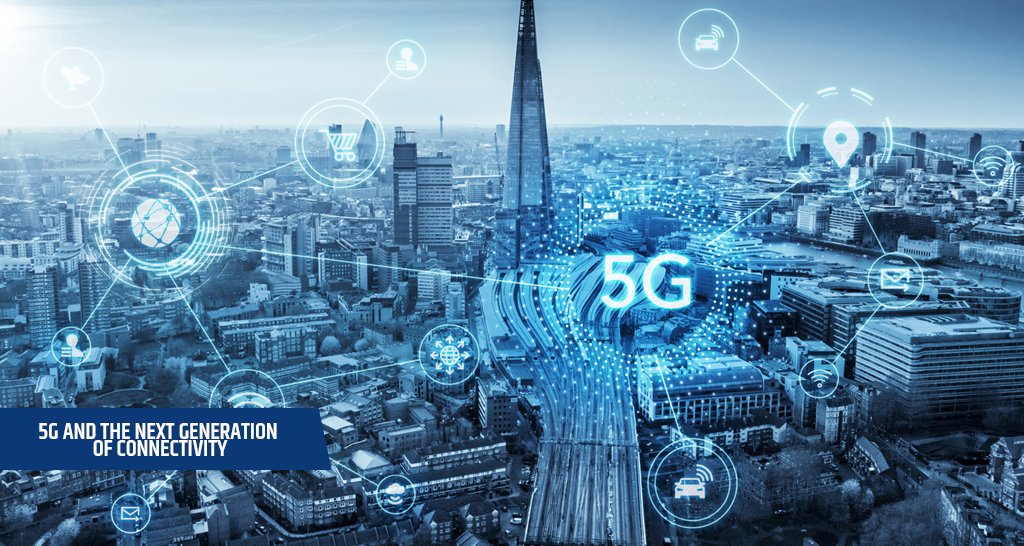Understanding 5G Technology
Fifth-generation (5G) technology represents a significant advancement in wireless communication, promising improved speed, lower latency, and greater connectivity compared to its predecessor, 4G. Unlike 4G, which primarily focused on enhancing mobile broadband service, 5G aims to facilitate a wide range of applications, including Internet of Things (IoT) devices, smart cities, and autonomous vehicles. This broader approach necessitates the use of several innovative foundational technologies.
One of the cornerstones of 5G technology is the utilization of millimeter waves, which operate within the frequency range of 30 GHz to 300 GHz. These high-frequency bands provide increased bandwidth and can carry a larger amount of data, enabling faster download and upload speeds. However, they have a shorter range and are more susceptible to obstacles compared to the frequencies used in 4G networks. Consequently, to mitigate these challenges, 5G networks employ small cells, which are low-powered base stations that can be strategically deployed to enhance coverage and capacity in densely populated urban areas.
Beamforming is another crucial technology utilized in 5G networks. Unlike previous generations that broadcast signals in all directions, beamforming enables the network to direct signals towards specific users. This targeted approach not only improves signal strength but also minimizes interference, resulting in optimal performance, especially in environments with high user density.
Theoretical speeds promised by 5G can reach up to 10 Gbps, with latency reduced to as low as one millisecond. This advancement could revolutionize various industries by allowing seamless connectivity for devices that require instantaneous communication. The increased reliability and enhanced capabilities of 5G will play a pivotal role in shaping the future of connectivity, offering transformative opportunities across multiple sectors.
The Impact of 5G on Industries
The introduction of 5G technology is heralding a new era of connectivity that promises to transform various industries, significantly enhancing operational efficiencies and unlocking innovative applications. In the healthcare sector, 5G enables remote surgery by providing the high bandwidth and low latency necessary for surgeons to operate on patients from distant locations. This advancement not only expands access to specialized medical care but also demonstrates the potential for lifesaving treatments in under-served areas.
Transportation is another industry poised for transformation due to 5G capabilities. The deployment of autonomous vehicles relies heavily on real-time communication between vehicles and infrastructure, which 5G can facilitate. Enhanced connectivity will enable vehicles to process data more quickly and accurately, improving safety and efficiency in transportation systems. Smart cities, which integrate various technologies to improve urban living, also benefit from 5G through advancements in traffic management and public safety monitoring.
Agriculture, often seen as traditional, is becoming increasingly tech-driven, thanks to 5G innovations. Farmers can utilize smart sensors and drones connected via 5G networks to monitor crop health, optimize irrigation, and enhance yield forecasting. This data-driven approach not only increases productivity but also promotes more sustainable farming practices, highlighting 5G’s role in addressing global food security challenges.
Finally, in the entertainment industry, 5G paves the way for immersive gaming experiences and augmented reality applications. With increased bandwidth, users can engage in high-definition streaming and gaming without interruption, leading to richer user interactions. From professional esports to home entertainment, the impact of 5G on engagement and immersiveness cannot be overstated.
Overall, 5G technology serves as a catalyst for innovation across these sectors, fundamentally reshaping how industries operate and interact with consumers in increasingly connected environments.
Challenges and Considerations in 5G Deployment
The rollout of 5G technology comes with a range of challenges and considerations that must be effectively addressed to ensure its successful implementation. One of the foremost hurdles is the substantial infrastructure investment required for its deployment. Unlike previous generations of mobile network technology, 5G demands a denser network of small cells and antennas, necessitating significant financial resources from service providers and governments alike. This poses a particular challenge in rural areas, where return on investment may be uncertain due to lower population densities.
Another critical concern involves spectrum management. The spectrum is a finite resource, and the allocation process can be fiercely competitive. Each country must navigate the complexities of securing and managing frequencies for 5G, balancing the needs of various stakeholders including telecommunications companies, government entities, and existing users of those frequencies. Furthermore, as competition increases, simultaneous spectrum allocations can lead to significant regulatory challenges, including the potential for disputes and delays in the deployment process.
Public apprehensions also play a pivotal role in shaping the momentum of 5G rollout. Health concerns surrounding the electromagnetic radiation emitted by 5G networks have sparked debates and led to calls for further research. Privacy issues are another aspect of public concern, as the advanced data collection capabilities inherent to 5G networks could raise important questions about surveillance and data security.
Additionally, geographical disparities in 5G deployment underscore a persistent digital divide. While urban areas may quickly access advanced connectivity, rural and remote regions often lag behind, thereby exacerbating existing inequalities in access to technology. Addressing these disparities is essential for ensuring equitable global connectivity, enhancing the benefits that 5G promises to bring to various sectors of society.
The Future of Connectivity Beyond 5G
The advent of 5G technology has revolutionized the way we connect and communicate, but the journey towards transformative connectivity does not stop here. Looking ahead, the emergence of 6G is positioned to redefine our understanding of network capabilities and user experiences. Expected to be rolled out around 2030, 6G aims to provide ultrafast data transfer rates of up to 1 terabit per second, significantly surpassing the limits set by its predecessor. This will enable applications that require extreme bandwidth, opening doors to innovations in artificial intelligence and virtual reality.
Moreover, the evolution of the Internet of Things (IoT) networks is intrinsically linked to the future of connectivity. As the number of connected devices continues to multiply exponentially, the need for robust, reliable, and low-latency networks becomes paramount. In this hyper-connected ecosystem, everyday items—from home appliances to industrial machinery—will communicate seamlessly, allowing for an unprecedented level of automation and smart living experiences. The integration of 5G and subsequent technologies will facilitate enhanced data analytics, enabling smarter decision-making processes in real time.
Additionally, future connectivity initiatives are expected to prioritize sustainable practices to curb environmental impact. As digital demands rise, so too does the responsibility to create energy-efficient networks. Implementing eco-friendly technologies, such as energy harvesting and intelligent network management systems, will be vital in achieving a balance between technological advancement and ecological preservation. Such initiatives underscore the vision of a future where connectivity empowers not just economic growth but also social and environmental sustainability.
In the grand scheme, the quest for faster, more reliable, and sustainable connectivity leads us toward a future rich with innovation, making daily life more interconnected and advancing industries in ways previously unimaginable.



